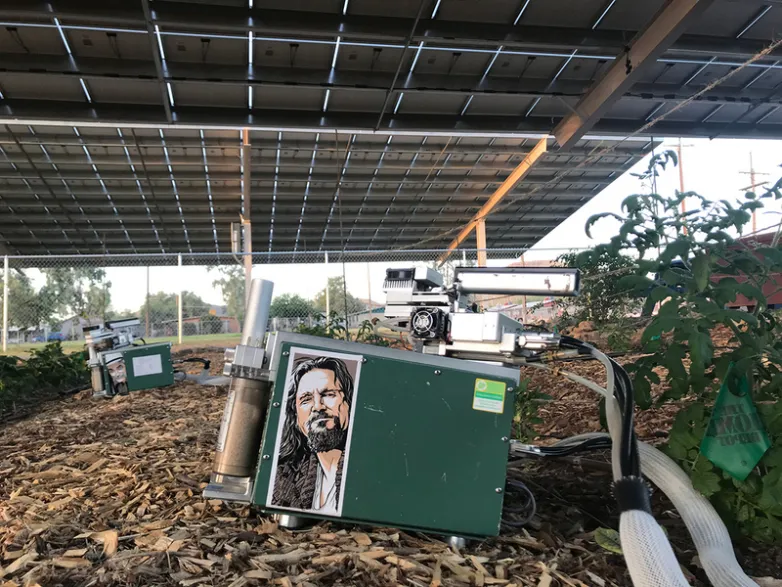Food crops do better in the shade of solar panels
Sep 3, 2019 05:39 PM ET
- Another study has highlighted the advantages of combining solar with agriculture. According to the paper, growing chiltepin pepper, jalapeno and cherry tomato in dryland areas of the U.S. under the shade of PV modules is not only possible, but can lead to a better harvest.

Researchers from the University of Arizona have claimed growing crops in the shade of solar panels can lead to two or three times more vegetable and fruit production than conventional agriculture.
In a study published in Nature, the group presented the results of a multi-year research project investigating how chiltepin pepper, jalapeno and cherry tomato plants grew in the shade of PV panels in a dryland location.
During the three-month summer growing season, the research team monitored microclimatic conditions such as light levels, air temperature and relative humidity, as well as PV panel temperature, soil moisture and irrigation water use, plant ecophysiological function and plant biomass production. The monitoring was carried out by sensors above the soil surface and at a depth of 5cm.
Shading is good
The scientists said their measurements showed how shading from the panels had a positive impact on air temperature, direct sunlight and atmospheric demand for water. “The shade provided by the PV panels resulted in cooler daytime temperatures and warmer nighttime temperatures than the traditional, open-sky planting system,” they wrote. “There was also a lower vapor pressure deficit in the agrivoltaics system, meaning there was more moisture in the air.”
The researchers claim the protection from sunlight and hot temperatures offered by solar panels enabled a better harvest for all three crops. “In fact, total chiltepin fruit production was three times greater under the PV panels in an agrivoltaic system, and tomato production was twice as great,” wrote the paper’s lead author, Greg Barron-Gafford. As for jalapenos, the researchers said yield was similar to that seen from conventional techniques but was achieved with 65% less transpirational water loss. “We found that each irrigation event can support crop growth for days, not just hours as in current agriculture practices,” Barron-Gafford added.
It’s not all about crops
Previous studies have spelled out the benefits of ‘agrivoltaics’ for solar panel performance and the University of Arizona researchers observed the cultivation of crops under PV created temperature conditions ideal for avoiding overheating, as the crops underneath emitted water through transpiration.
“All told, that is a win-win-win in terms of bettering how we grow our food, utilize our precious water resources and produce renewable energy,” Barron-Gafford said.
The scientists, who say research is needed on other crops, are cooperating with the U.S. Department of Energy’s National Renewable Energy Laboratory to understand how the results of their study can be applied in other regions and how regional policies can help such projects.
Land scarcity solution
In Europe, Swedish energy company Vattenfall has announced it intends to test agrivoltaics in the Netherlands, where there has been opposition to large scale solar over fears about the loss of agricultural land.
“We regularly hear from farmers, politicians and environmental organizations that it is a shame to use agricultural land for solar parks,” said Margit Deimel, director for large scale solar at Vattenfall’s solar and batteries business. “By investigating whether we can also combine solar parks with agriculture we want to increase the acceptance of our solar parks in the area.”
Deimel added, Vattenfall wants to work at different locations to discover an optimal design and operating model for agrivoltaic parks. The energy company said it would not consider crops that grow too tall, such as corn, asparagus or bamboo. “Think, for example, of cabbages, onions, potatoes, carrots or soft fruit,” Deimel added.
Also read

